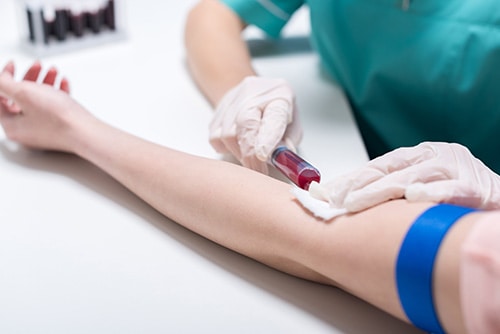
WHAT IS FOLLICLE STIMULATING HORMONE?
 Follicle stimulating hormone is one of the gonadotrophic hormones, the other being luteinising hormone. Both are released by the pituitary gland into the bloodstream. Follicle stimulating hormone is one of the hormones essential to pubertal development and the function of women’s ovaries and men’s testes. In women, this hormone stimulates the growth of ovarian follicles in the ovary before the release of an egg from one follicle at ovulation. It also increases oestradiol production. In men, follicle stimulating hormone acts on the Sertoli cells of the testes to stimulate sperm production (spermatogenesis).
Follicle stimulating hormone is one of the gonadotrophic hormones, the other being luteinising hormone. Both are released by the pituitary gland into the bloodstream. Follicle stimulating hormone is one of the hormones essential to pubertal development and the function of women’s ovaries and men’s testes. In women, this hormone stimulates the growth of ovarian follicles in the ovary before the release of an egg from one follicle at ovulation. It also increases oestradiol production. In men, follicle stimulating hormone acts on the Sertoli cells of the testes to stimulate sperm production (spermatogenesis).
HOW IS FOLLICLE STIMULATING HORMONE CONTROLLED?
In women, when hormone levels fall towards the end of the menstrual cycle, this is sensed by nerve cells in the hypothalamus. These cells produce more gonadotrophin-releasing hormone, which in turn stimulates the pituitary gland to produce more follicle stimulating hormone. The rise in follicle stimulating hormone stimulates the growth of the follicle in the ovary. With this growth, the cells of the follicles produce increasing amounts of oestradiol and inhibin. Thus, during each menstrual cycle, there is a rise in follicle stimulating hormone secretion in the first half of the cycle that stimulates follicular growth in the ovary. After ovulation the ruptured follicle forms a corpus luteum that produces high levels of progesterone. This inhibits the release of follicle stimulating hormone. Towards the end of the cycle the corpus luteum breaks down, progesterone production decreases and the next menstrual cycle begins when follicle stimulating hormone starts to rise again. In men, the production of follicle stimulating hormone is regulated by the circulating levels of testosterone and inhibin, both produced by the testes.
WHAT HAPPENS IF I HAVE TOO MUCH FOLLICLE STIMULATING HORMONE?
Most often, raised levels of follicle stimulating hormone are a sign of malfunction in the ovary or testis. If the gonads fail to create enough oestrogen, testosterone and/or inhibin, the correct feedback control of follicle stimulating hormone production from the pituitary gland is lost and the levels of both follicle stimulating hormone and luteinising hormone will rise. This condition is called hypergonadotrophic-hypogonadism, and is associated with primary ovarian failure or testicular failure. This is seen in conditions such as Klinefelter’s syndrome in men and Turner syndrome in women.
WHAT HAPPENS IF I HAVE TOO LITTLE FOLLICLE STIMULATING HORMONE?
In women, a lack of follicle stimulating hormone leads to incomplete development at puberty and poor ovarian function (ovarian failure). In this situation ovarian follicles do not grow properly and do not release an egg, thus leading to infertility. Since levels of follicle stimulating hormone in the bloodstream are low, this condition is called hypogonadotrophic-hypogonadism. Sufficient follicle stimulating hormone action is also needed for proper sperm production. In the case of complete absence of follicle stimulating hormone in men, lack of puberty and infertility due to lack of sperm (azoospermia) can occur. Partial follicle stimulating hormone deficiency in men can cause delayed puberty and limited sperm production (oligozoospermia), but fathering a child may still be possible.
Source: www.yourhormones.info.